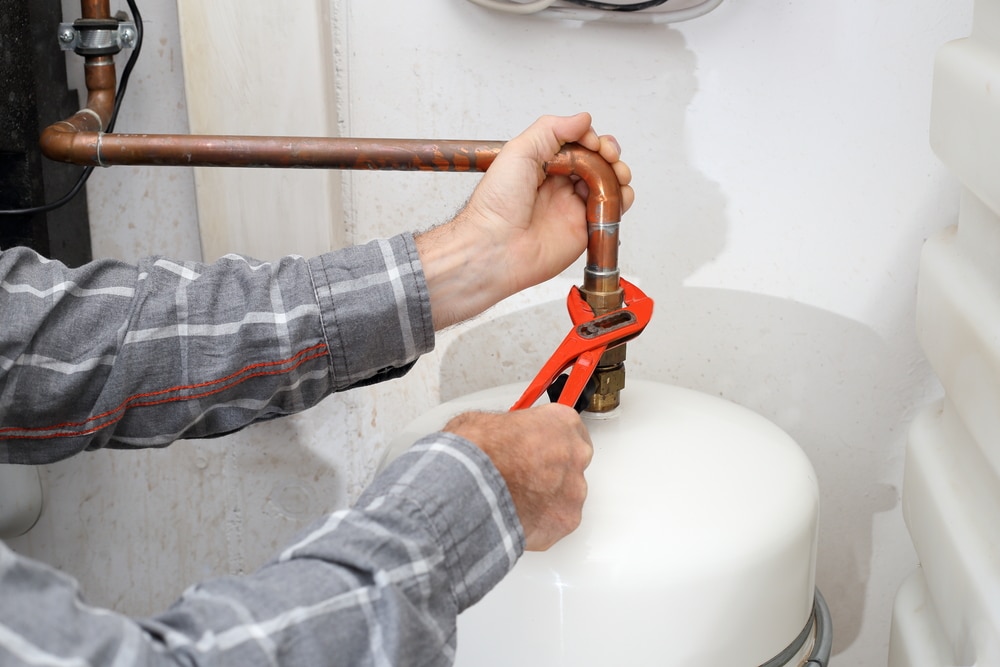
For effective maintenance of your hot water system, it is incredibly important to understand the working parts of it. The two main parts needed to extend the longevity of your hot water system are the sacrificial anode and temperature and pressure relief valve (TPR valve for short).
What is a sacrificial anode?
A sacrificial anode is a metal rod which is normally made from aluminum or magnesium and coated in zinc, which hangs down inside your hot water tank.
The sacrificial anode is designed to attract minerals and impurities in the water which would otherwise react with the inside of the tank and cause it to rust and deteriorate. This ‘sacrificial’ rod slowly rusts and degrades, sacrificing its own life for the greater good of your hot water tank.
The most important aspect of hot water system maintenance is routinely replacing your sacrificial anode as and when necessary.
When should I replace my sacrificial anode?
In most cases sacrificial anodes need to be replaced once every five years or at the interval recommended by the manufacturer. Failure to replace a sacrificial anode is one of the biggest contributing factors of hot water tank failure. If you’re careful and replace your sacrificial anode regularly, you can easily extend the service life of your hot water tank by another five years, ten years or even more.
How to replace a sacrificial anode?
Call one of our experts at QLD Coastal Plumbing to replace your sacrificial anode today.
This is not a job that can be carried out yourself. All works on hot water systems are licenced works and carry heavy fines if carried out by unlicenced persons. Save yourself the grief and costs and use a licenced plumber at Queensland Coastal Plumbing.
Hot water tanks contain scalding hot water and steam, and are normally attached directly to either a gas supply, or to electricity which together with water could be very dangerous.
Once every five years (or at the interval recommended by the manufacturer) you should hire a qualified, appropriately licensed plumber in your area to service your system and replace the sacrificial anode. The cost of employing a qualified technician to service your hot water tank is minor compared to the many thousands you’d otherwise have to pay to replace it.
What are temperature and pressure relief (TPR) valves?
Temperature and pressure relief valves are also known as TPR valves or T&P valves. These valves are fitted to hot water tanks as a secondary safety measure (see image).
TPR valves work by automatically ‘venting’ hot water if the temperature or pressure of the water in the tank gets too high, so as to help prevent it from splitting or exploding.
Most people don’t realise it, but If your TPR valve isn’t functioning properly, it has the potential to pose quite a serious risk – water heaters left to their own devices with malfunctioning TPR valves have been known to explode.
How to test your temperature and pressure relief (TPR) valve
Flushing and testing a TPR valve is relatively straightforward, and something you can do yourself. If the valve is already leaking water through the outlet pipe, it will need to be replaced. Testing the valve involves expelling some extremely hot water, so If you’re going to test your TPR valve, ensure that you’re wearing long pants, covered shoes and gloves:
- Check to ensure that the area beneath the outlet pipe from the TPR valve is clear and free from obstruction. Make sure you’re standing as far away as possible from the end of the pipe.
- Gently lift the handle on the TPR valve. If it’s stuck, don’t force it. If it doesn’t want to move, you will need to replace it. As you lift the valve handle, very hot water should flow out from the end of the outlet pipe.
- Gently return the valve to its closed position. The flow of water should stop. If it doesn’t, this likely indicates that the valve isn’t working reliably and needs to be replaced.
How often should temperature and pressure relief (TPR) valves be tested and replaced?
Ideally, you should refer to the manufacturer’s advice on how often to test your TPR valve – although as a rule of thumb this is normally something you should do once every six months.
TPR valves have a limited rated service life too, and need to be replaced periodically. Again, how often they need to be replaced will depend on what’s recommended by the manufacturer. In many cases this is something you’ll need to do once every two years.
How to replace a temperature and pressure relief valve (TPR valve)
Again, any work that’s carried out on your hot water system needs to be done by a qualified hot water service technician (i.e. a plumber with the relevant license and qualifications). If your TPR valve needs replacing, contact a plumber in your area to have it replaced.
For more plumbing tips, read our previous blog post on blocked drains!